If you’re planning a trip to Albania and looking for a place where history, culture, and landscape meet in a magical way, Kruja Castle is a destination you simply cannot miss. Perched on a hill with breathtaking views, this castle is not just a monument; it’s a symbol of Albanian national pride and a gateway to the heroic past of the country.
This detailed guide will help you discover everything you need to know before visiting Kruja Castle from its glorious history to the attractions hidden within its walls, plus practical tips on visiting, transport, ticket prices, and more.

A brief historical overview
Kruja Castle has a history spanning more than 1,500 years. Originally built in the 5th–6th centuries AD, it gained immense significance in the 15th century as the center of Albanian resistance against the Ottoman Empire. Under the leadership of national hero Gjergj Kastrioti Skanderbeg, Kruja stood undefeated for decades, defying three Ottoman sieges (1450, 1466, and 1467)—a strategic miracle of its time.
After Skanderbeg’s death in 1468, the castle finally fell to the Ottomans in 1478. However, it continued to live on in collective memory as a symbol of Albanian resistance and national pride. Today, its ruins, towers, and stone walls still echo that heroic era, making Kruja Castle one of the most important historical landmarks in the Balkans.
Must-see attractions inside the castle
Inside Kruja Castle’s walls awaits a rich cultural and historical experience. At its center stands the “Gjergj Kastrioti Skanderbeg” Historical Museum, one of the most visited in the country, narrating the story of Skanderbeg and Albanian resistance through authentic relics, documents, and impressive architecture.
Nearby is the Ethnographic Museum, located in an 18th-century traditional house, where you can get a closer look at traditional Albanian lifestyle. Each room preserves original furniture, utensils, and objects reflecting family life of that time.
Another fascinating spot is the Dollma Tekke, a small, peaceful place of worship for the Bektashi community, which according to legend was frequented even by Skanderbeg himself. Though modest in size, it adds a spiritual dimension to the castle that touches visitors.
Don’t miss the 15th-century Ottoman Hamam. Although closed to the public today, its remaining architecture offers another glimpse into the city’s past.
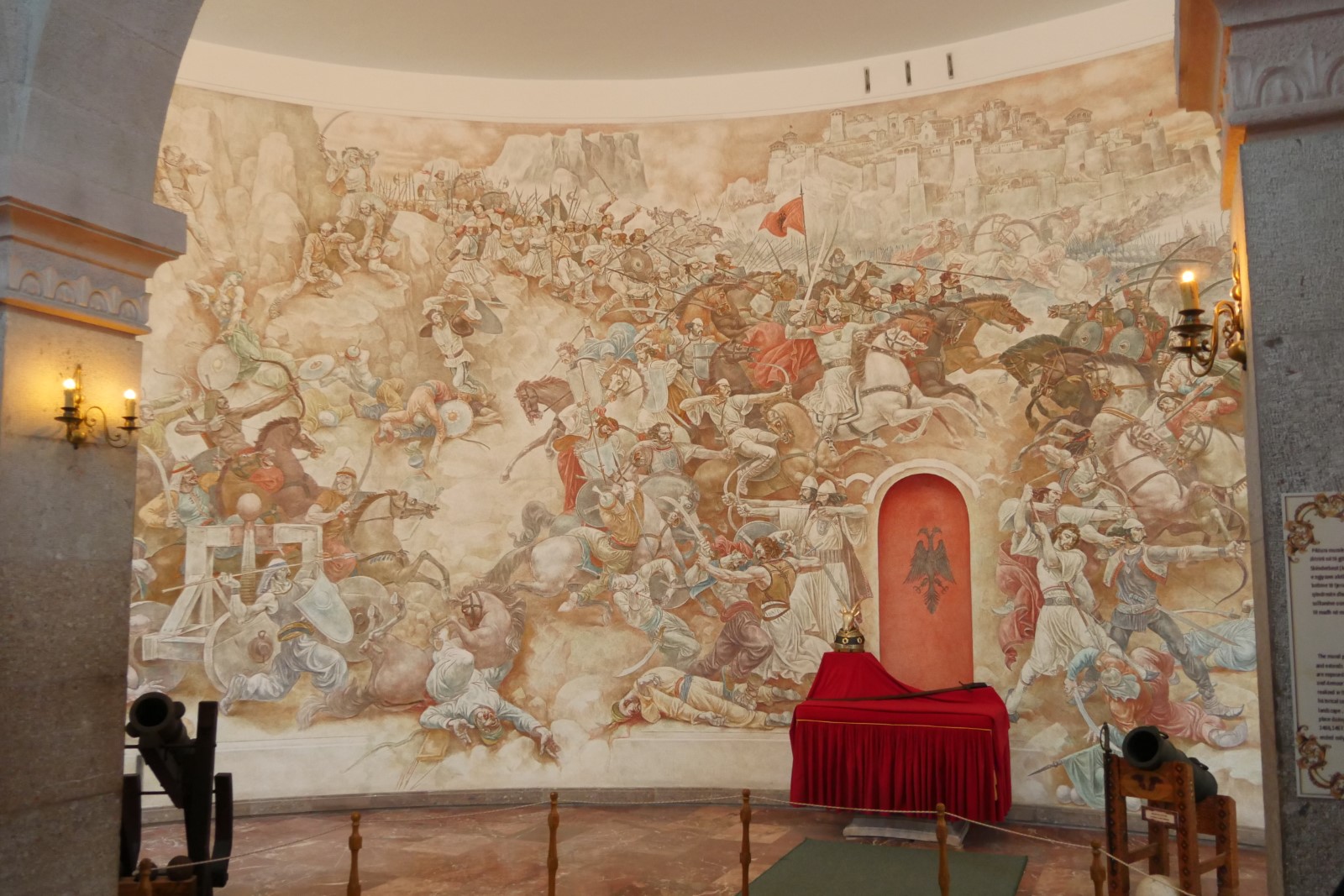
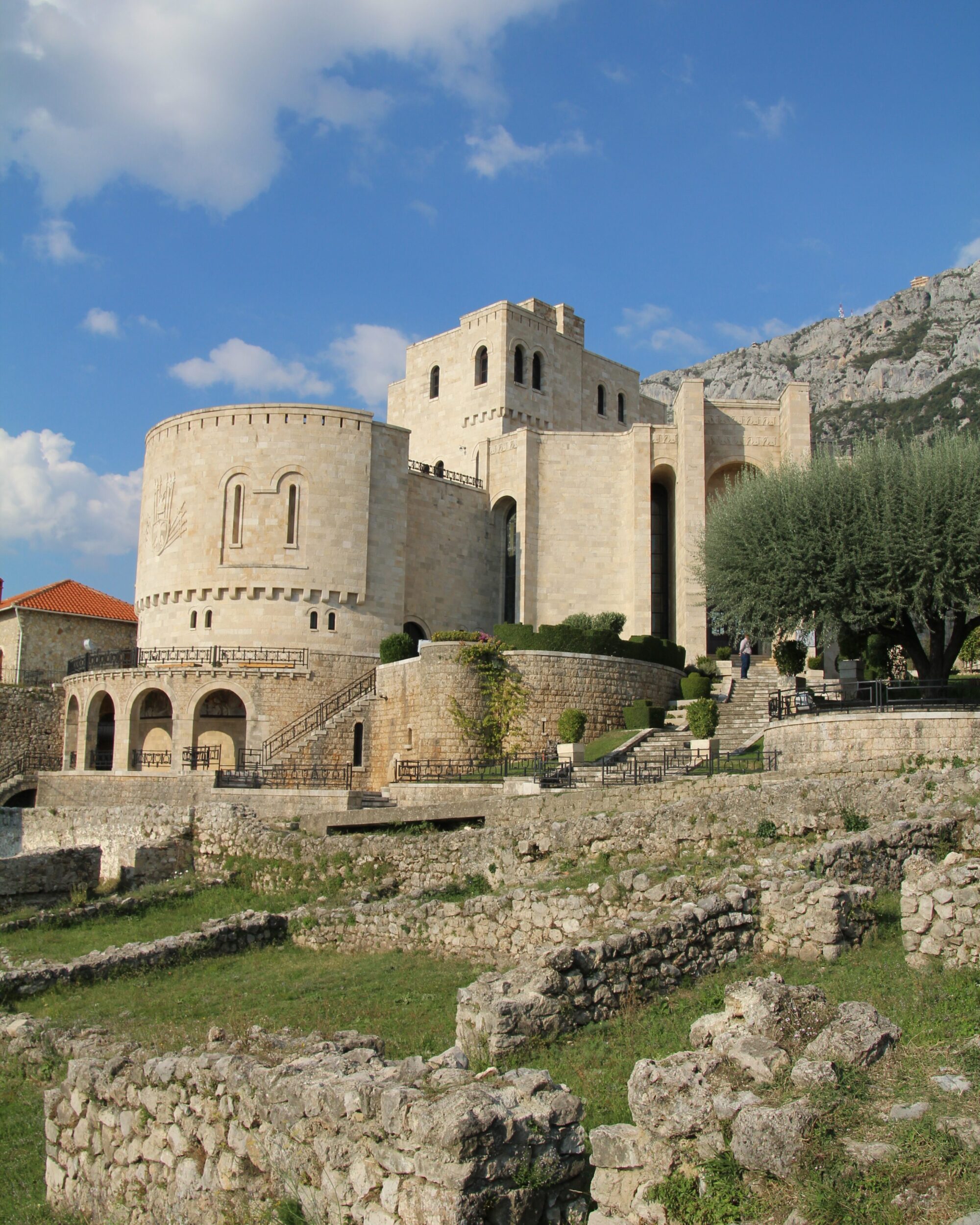
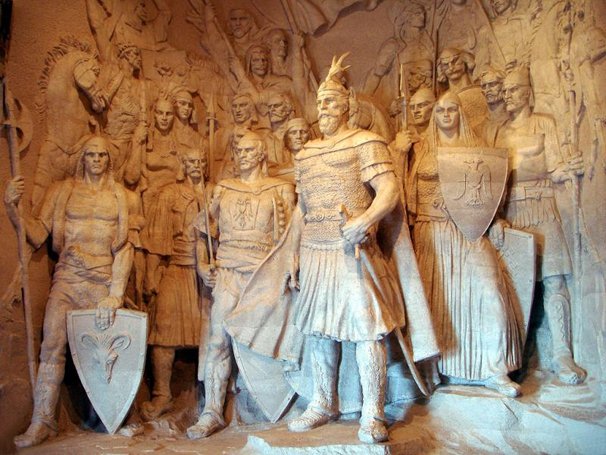
The old bazaar – A journey back in time
Before entering the castle, you’ll pass through one of the city’s most charming areas: the Kruja Old Bazaar. With its cobbled streets, wooden shops, and preserved medieval atmosphere, the bazaar is an experience on its own. Here you’ll find authentic Albanian souvenirs, from wool carpets and copper crafts to filigree jewelry, handwoven scarves, and artisanal products you won’t find anywhere else.
Many of the shops have been passed down for generations, with artisans often working right on site. Beyond shopping, the bazaar is a great place for photos, to enjoy a fresh coffee, and to feel the slow rhythm of traditional Albanian life a beautiful contrast to the modern world.
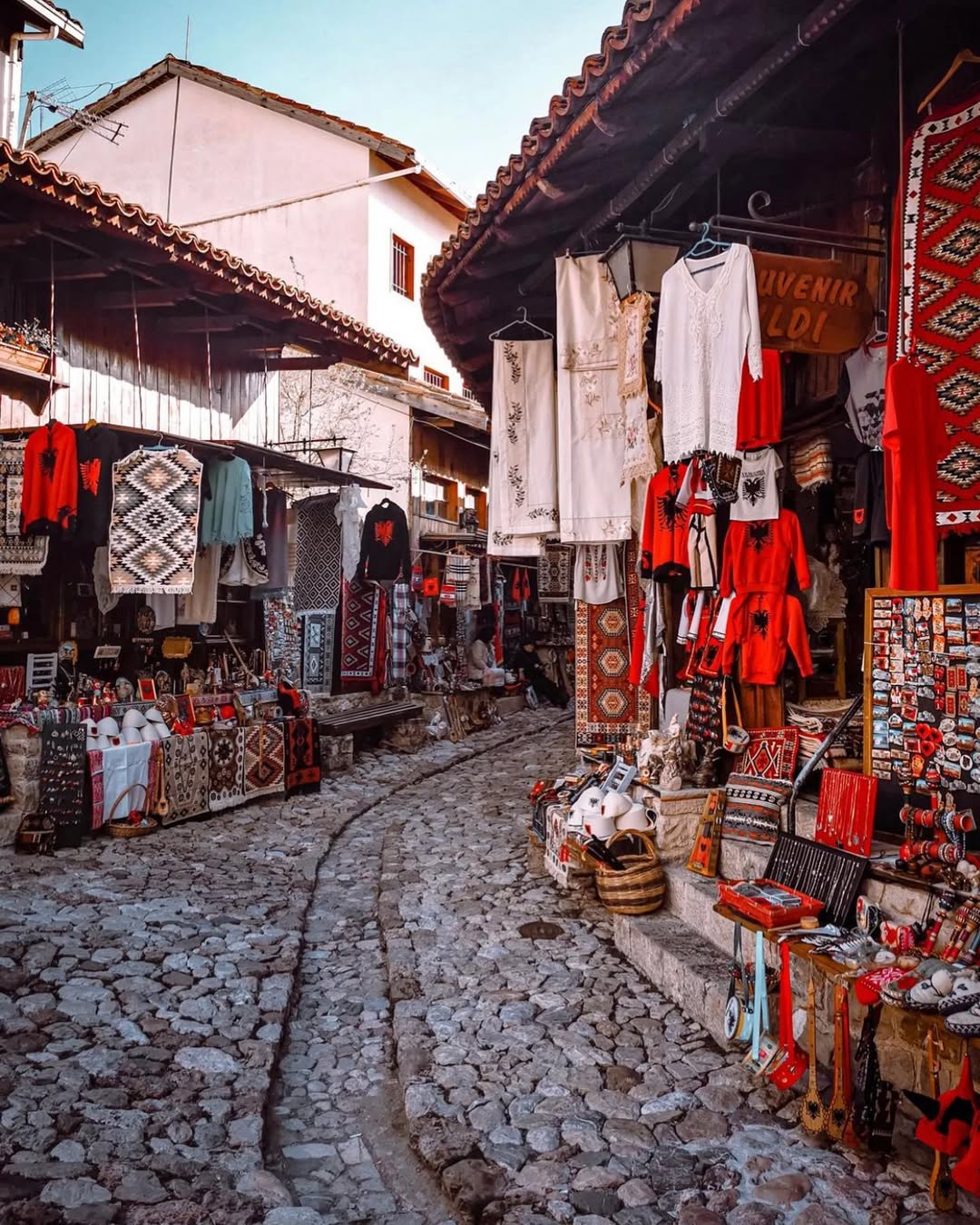
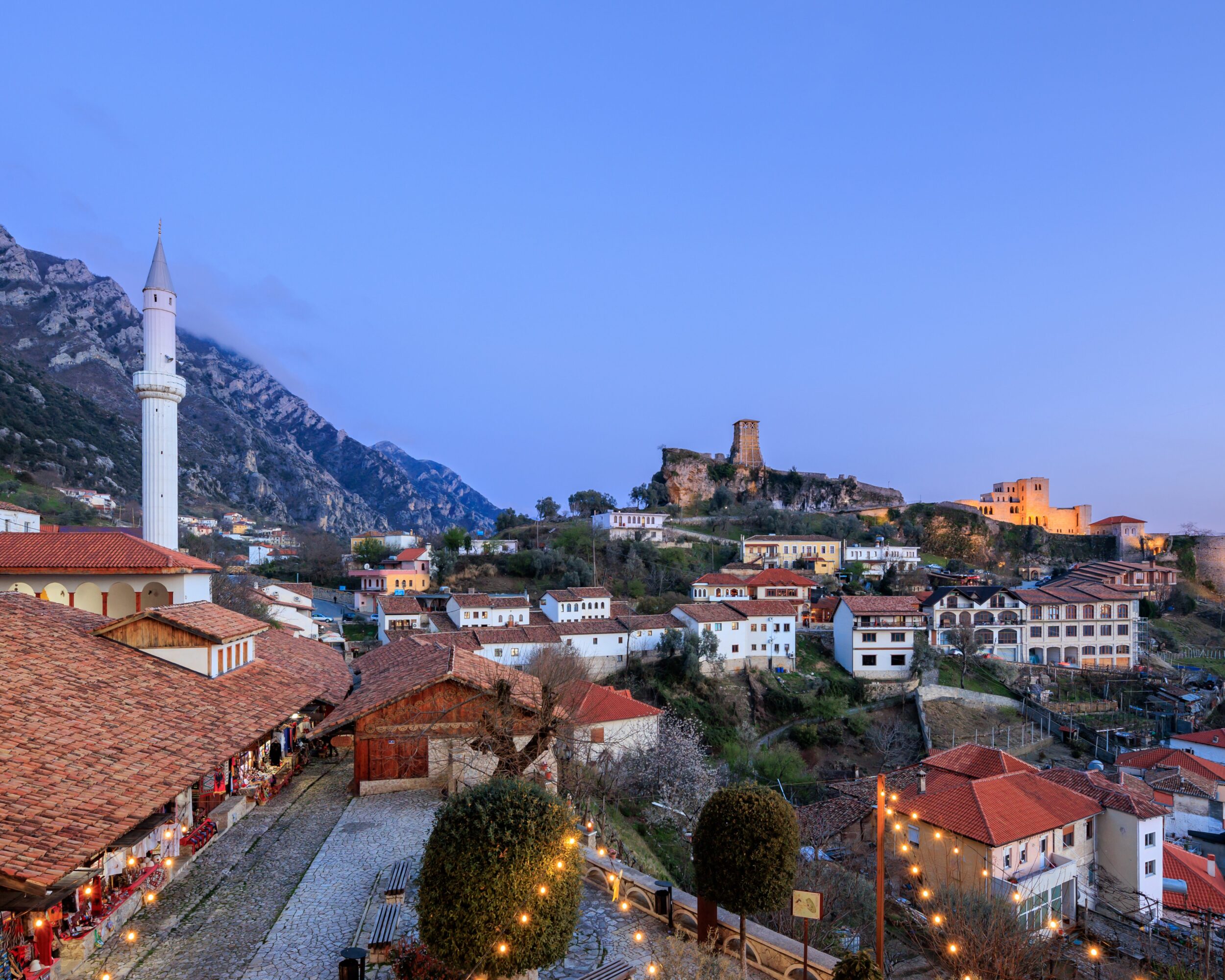
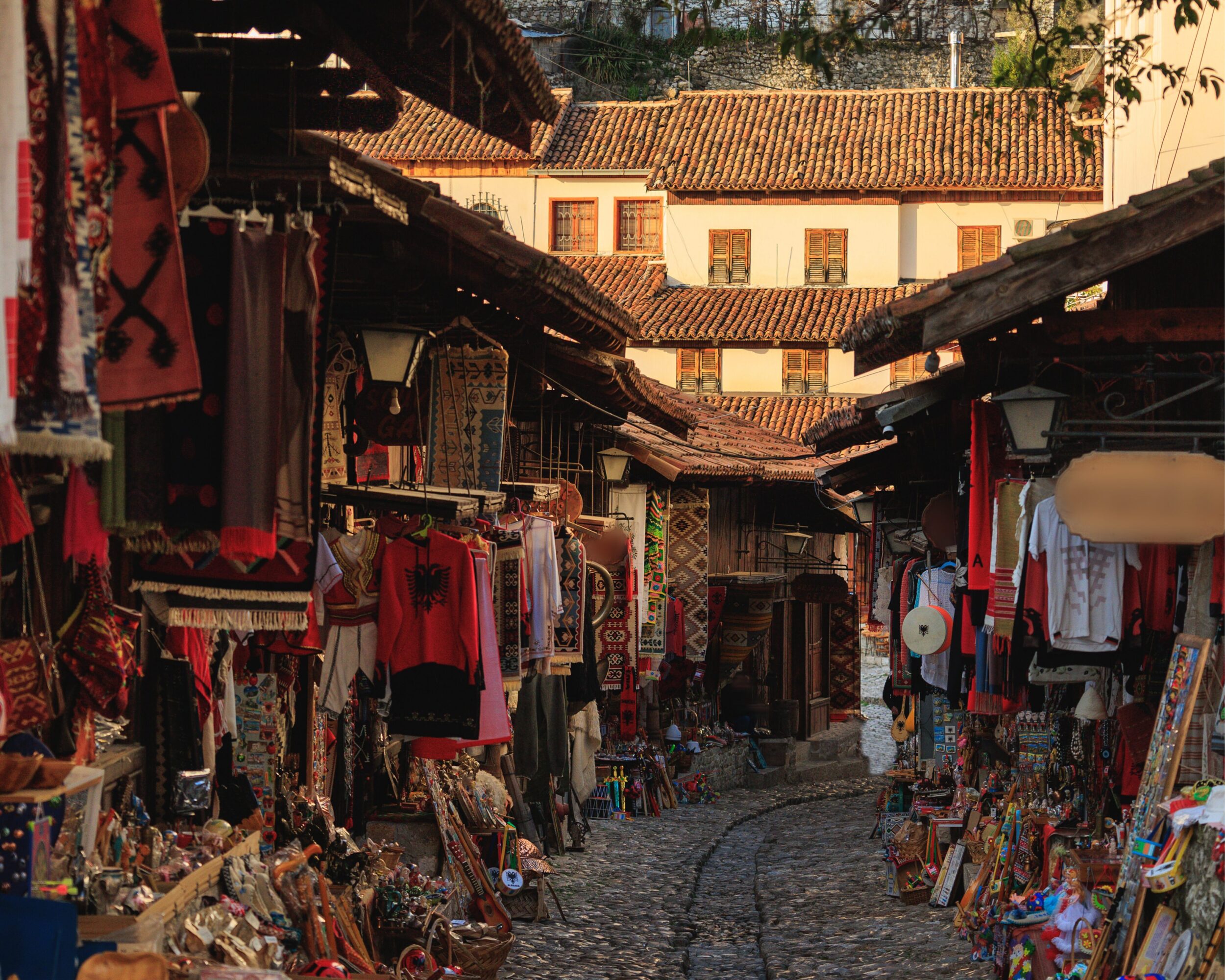
How to get there & what to expect
- 📍 Location: Kruja Castle is located about 20 km north of Tirana, ideal for a day trip.
- 🚌 By bus from Tirana:
- Departure from North–South Bus Terminal
- Every hour from 07:00 to 18:00
- Travel time: about 56 minutes
- Price: about 200 ALL (approx. €2)
- 🚗 By car:
- Follow the A1 Highway (Laprakë–Fushë-Krujë) and turn for “Krujë”
- Travel time: 30–45 minutes from Tirana or Durrës
- 👥 What to expect:
- A historic city with a warm, welcoming atmosphere
- Panoramic views, cobblestone streets, and places frozen in time
Schedule, prices & services
🏰 Kruja Castle:
- Open to visitors 24 hours a day
- Entrance is free to explore the outer areas and ruins
🏛️ “Gjergj Kastrioti Skanderbeg” Historical Museum:
- Opening hours: 09:00 – 18:00, daily
- Ticket price: 500 ALL per person
- Discount for groups of 12+: 400 ALL
- Students / children (12–18 years): 150 ALL
- Tickets can also be purchased online at myticket.al for 400 ALL
🏡 Ethnographic Museum:
- Ticket price: about 400 ALL per person
- Discounts available for students
- Children under 12 enter free
🛍️ Old Bazaar:
- Entrance is free
- Open throughout the day
- Numerous shops, handicrafts, and places for coffee and relaxation
📋 Services for tourists:
- Local tour guides available near the castle and museum entrances
- Information and brochures available in English
- Public parking areas near the castle and bazaar entrances
Restaurants & accommodations with beautiful views – for more see:
➤ Top Hotels in Kruja
➤ Best Restaurants in Kruja

Useful tips for visitors
- 📅 Best time to visit:
- Spring (April–June) and Autumn (September–October) are ideal, with mild weather and picturesque views.
- Summer can be very hot, while winter brings rain and colder temperatures.
- 👟 What to bring:
- Comfortable walking shoes for cobbled or uneven terrain
- Hat and water in hot months
- Camera or charged phone — the views are stunning!
- ⏳ How much time to plan:
- Basic visit (castle + bazaar): 1–2 hours
- Full visit with museums: 3–4 hours or a half day
- Extended visit including nearby areas (such as Mount Sari Salltik): 1 full day
Discover more of albania with Love Albania 🇦🇱
A visit to Kruja Castle is much more than a tourist stop; it’s a journey back in time, into the heart of Albanian history and culture. With every step through its walls, every story you hear in the museums, and every souvenir you carry from the old bazaar, you’ll feel the spirit of a nation that has stood proud through every challenge.
If this guide helped you, don’t stop here! Explore more articles on Love Albania to discover other magical destinations, travel tips, and stories that will make you fall in love with Albania.



